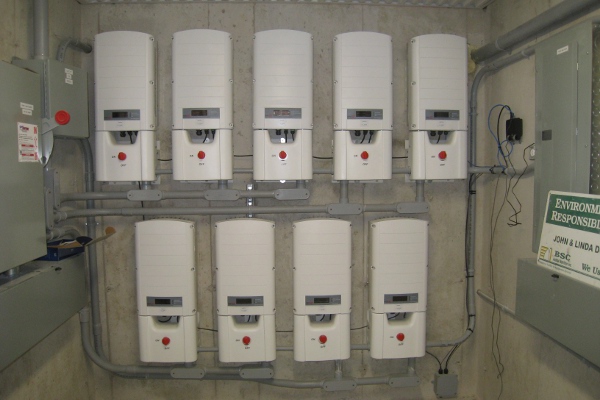Tips from SolarEdge Technologies’ Dru Sutton, technical marketing manager of North America; Jeff Laughy, training manager of North America; and Mike Rogerson, marketing manager of North America
 Using a number of string inverters in place of a central inverter on commercial installations has been happening in Europe for many years, and it’s finally starting to get more popular in the United States.
Using a number of string inverters in place of a central inverter on commercial installations has been happening in Europe for many years, and it’s finally starting to get more popular in the United States.
Some advantages to using string inverters on a larger installation:
Cheaper installation – Purchasing multiple string inverters may cost more initially, but the BOS savings (less conduit and wire) brings down the overall installation price.
Eliminated eyesore – No need for a concrete pad fenced off somewhere to house a large central inverter.
Ease of installation – String inverters are lightweight and manageable by one person.
Faster repair – It’s easier to have a spare string inverter on-site than a back-up central inverter. Also, when something fails, a string inverter can be easily replaced, while repairing components of a central inverter takes time.
Central inverters still make sense on larger installations (much larger than 1 MW). They have a higher efficiency and a better cost structure. Some customers also don’t want to have a large number of inverters on their project. For these reasons and more, central inverters will continue to be a constant in the solar industry. But string inverters for mid-sized solar installations are worth considering.
— Solar Builder magazine
[source: http://www.solarbuildermag.com/featured/string-inverters-commercial-installs-solar-edge/]

Leave a Reply
You must be logged in to post a comment.